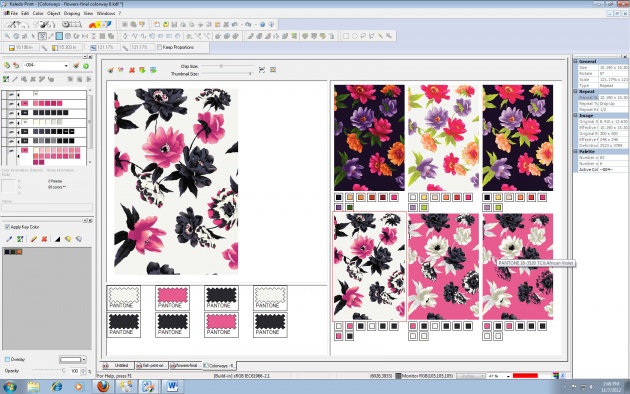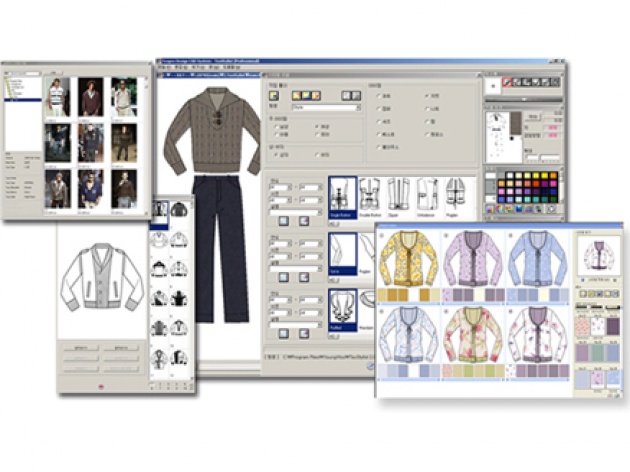Textile designs are the original creation of the designer. CAD (Computer Aided Design) is a computer program that helps to visualize the design in final form without producing any sample. Many of ours clients, as Calvin Klein, use this software as is very helpful to minimize time. Its easy to operate, the data (as fabric construction, yarn size, print/finishing, content, etc) can be transmitted through computer files, and also can be easily modify, and you can control the process from different locations.

CAD bring so many specific softwares for different aspects of textile and apparel manufacturing., production of dobby, jacquard, printed fabrics, etc. For example, the design of novelty jacquards woven fabrics. CAD can be used for drawing thread patterns directly on the fabric simulation, easy to edit weave, colors, weft density, warp tension.
For the creation of women's dresses, or printed sweaters, this program bring the designer the tool to alter the colors, the image sizes, the repeats and which way - horizontal or vertical

CAD allows the designer the vision of the clothing on virtual models, changing colors, shapes, patterns, minimizing time and saving cost, as less samples will require further adjustments. CAD is also an important industrial art extensively used in many applications, including automotive, shipbuilding, and aerospace industries, industrial and architectural design, prosthetics, and many more. CAD is widely used to produce computer animation for special effects in movies, advertising and technical manuals. The modern ubiquity and power of computers means that even perfume bottles and shampoo dispensers are designed using techniques unheard of by engineers of the 1960s. Because of its enormous economic importance, CAD has been a major driving force for research in computational geometry, computer graphics (both hardware and software), and discrete differential geometry.[]
reference, http://en.wikipedia.org/wiki/Computer-aided_design



